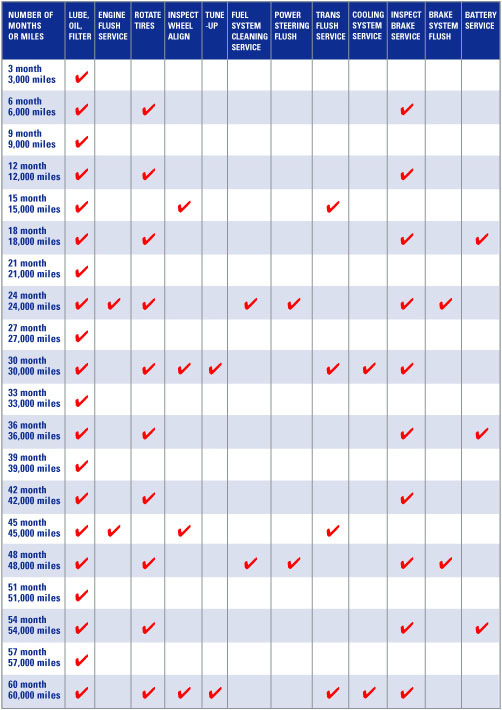 | ||||

PREVENTATIVE MAINTENANCE
Ever wonder how some cars just seem to run and run and never break down? Their owner probably follows these simple maintenance tips on a regular basis. It’s simple: take care of your vehicle and it’ll take care of you!
So check out our complete Preventative Maintenance checklist to ensure you’ll end up with far more trouble-free miles.
For a printer-friendly version of the Preventative Maintenance checklist, please click here.
Air Filter
Be sure to check it every month. If it becomes dirty, or you get a tune-up, have it replaced. It’s easy to find and reach: usually, it’s the big round filter container at the top of the engine.
Belts and Hoses
Take a quick look periodically at belts and hoses. If any belts look frayed or worn, replace them. If your hoses are bulging, brittle or rotten, they need to go. Bottom line? If a hose looks bad, or feels too soft or too hard, it should be replaced by a Quality Tune-Up professional.
Brake Fluid
Every month you should look at brake fluid levels. Usually the lid on the brake fluid master cylinder is dirty, so wipe it off—then unscrew the reservoir lid, check levels and top off. Do not overfill.
Engine Oil
As a matter of routine, check the oil after every gas fill up. You know the routine: remove the dipstick, wipe it clean. Insert it fully and remove it again. If it is low, add oil. The oil should be changed every 3,000 miles or 3 months, whichever comes first. And always make sure to replace the oil filter with every oil change.
Exhaust
Once every 6 months or so, look underneath your vehicle for loose or broken exhaust clamps and supports. Check for holes in the muffler or pipes. Replace the rusted or damaged parts.
Lights
It’s always a good idea to check all your vehicle lights to make sure they are working. In your driveway or while parked, check your turn signals, brake lights, emergency flashers and headlights. Keep spare bulbs and fuses in your vehicle.
Power Steering Fluid
It’s also a good idea to check the power steering fluid level once per month. It’s simple: just remove the reservoir dipstick. If the level is down, add fluid and inspect the pump and hoses for leaks.
Check your vehicle’s owner’s manual for which type of fluid to use.
Tires
It is critical for safety and proper wear to always keep your tires inflated to the manufacturer’s recommended pressure. Check for cuts, bulges and excessive tread wear. Uneven wear indicates tires are misaligned or out of balance.
Transmission Fluid
Every month you should check your transmission fluid with the engine warm and running, and the parking brake on. Shift to drive, then to park. Remove dipstick, wipe dry, insert it and remove it again. Add the approved type fluid, if needed. Never overfill.
Washer Fluid
Nothing’s worse than a dirty windshield and no fluid in reserve to clean it! Always keep the windshield washer fluid reservoir full—and if you’re snow bound, fill with non-freezing fluid. Also, you can use some of it to clean off the wiper blades.
Wiper Blades
When you’re washing your windows at a gas station, once in a while inspect the wiper blades. Replace them before they get brittle or the rubber looks worn. They should be replaced at least once per year, and more often if smearing occurs.
© 2011 Quality Tune-Up Shops
Auto Care Center Since 1976

